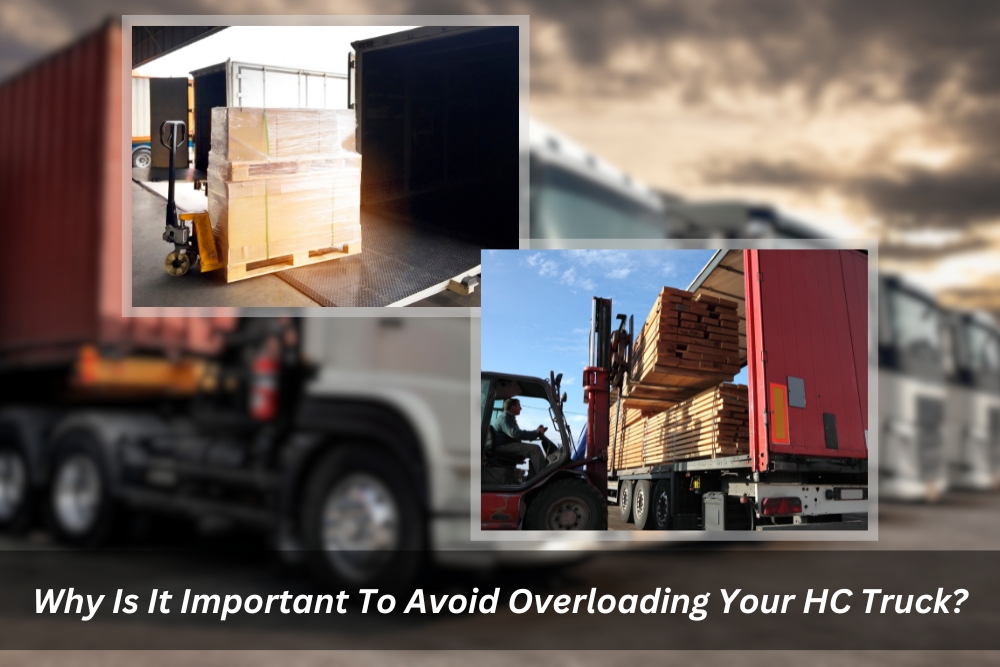HC trucks are the workhorses of the Australian landscape, delivering essential goods and services across the nation. While they’re built tough, it’s crucial to remember that exceeding weight limits can have serious consequences. Overloading your HC truck isn’t just a matter of inconvenience; it can pose a significant threat to your safety, your wallet, and the environment.
What are the dangers of overloading your HC truck?
Overloading your HC truck isn’t just a hunch, it’s a recipe for trouble. Here’s why:
- Increased risk of accidents and injuries: It’s simple physics. A heavier truck takes longer to stop and requires more space to maneuver. This significantly increases the risk of accidents, potentially injuring you, other motorists, and pedestrians.
- Damage to your truck: Exceeding weight limits puts immense strain on your truck’s engine, brakes, suspension, and tires. Furthermore, this can lead to costly breakdowns and repairs, and potentially even shorten your truck’s lifespan.
- Legal repercussions: Transport authorities don’t take overloading lightly. You can face hefty fines, points on your licence, and even vehicle impoundment if caught exceeding weight limits.
- Environmental impact: An overloaded truck consumes more fuel, releases more emissions, and contributes to unnecessary wear and tear on roads and bridges. Also, this not only harms the environment but also adds to your operating costs.
How to identify if your HC truck is overloaded
Before you hit the road, it’s crucial to ensure your truck isn’t carrying more than its fair share. Here’s what you can do:
- Understand weight limits: Your HC truck’s weight limit is specific to its model and configuration. Check your vehicle manual or contact the manufacturer for precise information.
- Use a weighbridge: Don’t guesstimate. Get your truck weighed on a certified weighbridge before and after loading to ensure you’re within legal limits.
- Visual signs of overloading: Look for clues like a sagging suspension, uneven tire wear, and difficulty steering. Additionally, these can indicate your truck is struggling under the weight.
What are the best practices to avoid overloading your HC truck?
Avoiding overloading your HC truck isn’t just a matter of good intentions; it requires careful planning, mindful practices, and a proactive approach. So, here’s a more detailed breakdown of the best practices you can implement to ensure safe and legal operations:
Pre-load planning
- Route mapping: Before a single box goes on the truck, plan your route. This helps you anticipate any potential weight restrictions on specific roads or bridges, allowing you to adjust your load accordingly.
- Cargo weight calculation: Don’t play guessing games. Calculate the exact weight of your entire cargo before loading. Basically, this can be done manually with a weighbridge slip or by using specialised software.
- Load distribution planning: Consider the weight distribution within your truck. Also, aim for a balanced load across axles to prevent overloading specific areas and ensure safe handling.
Loading techniques
- Utilise loading equipment: Take advantage of forklifts, pallet jacks, and other lifting equipment to distribute heavier items evenly and efficiently. Furthermore, this reduces the risk of manual strain and ensures proper weight placement.
- Secure cargo correctly: Secure all your cargo using ropes, straps, and other tie-downs. This prevents items from shifting during transport, which can lead to uneven weight distribution and potential hazards.
- Double-check load balance: After loading, visually inspect your truck for any imbalances or unevenness. Don’t hesitate to adjust the load if needed to achieve proper weight distribution.
Load monitoring
- Regular weighing: Get your truck weighed regularly, especially before long journeys or when carrying large loads. Furthermore, this allows you to confirm you’re within legal weight limits and avoid potential penalties.
- Visual inspections: Keep an eye out for any visual cues indicating overloading, such as a sagging suspension, uneven tire wear, or difficulty steering. Additionally, these can be early warning signs that your truck is struggling under the weight.
- Driver awareness: Train your drivers to be aware of the signs of overloading and empower them to refuse to operate a truck they believe is unsafe or overloaded.
Continuous improvement
- Invest in equipment: Consider investing in weight management technology like onboard scales or weighbridge integration systems. Generally, these tools can provide real-time weight information and help you optimise your loading process.
- Seek expert advice: Don’t be afraid to seek help from experienced transport companies or logistics professionals. Basically, they can offer valuable advice on load planning, safe loading techniques, and compliance with regulations.
- Regular training: Regularly train your drivers and loading personnel on the importance of avoiding overloading, proper loading practices, and weight regulations. Moreover, this ensures everyone is on the same page and promotes a culture of safety compliance.
By implementing these best practices, you can effectively avoid overloading your HC truck and reap the benefits of a safe, efficient, and profitable operation. Remember, prioritising safety and compliance isn’t just about avoiding penalties; it’s about protecting your drivers, your vehicle, your business, and the people on the road.
What resources are available to help you comply with weight limits?
No need to navigate the weight limit maze alone. Here are some helpful resources:
- Manufacturer guidelines: Your truck’s manual is a treasure trove of information. It includes details about weight limits, loading recommendations, and safe operation practices.
- Regulatory authorities: Each state in Australia has its transport regulations. Contacting your local transport authority can provide you with specific weight limits and guidelines for your area.
- Professional assistance: Don’t be shy to seek help. Experienced transport companies and logistics professionals can offer valuable advice and ensure your loads comply with regulations.
What are the long-term benefits of avoiding overloading your HC truck?
By operating within weight limits, you’re not just following the rules; you’re investing in your business’s future:
- Improved safety: A safe work environment is a productive one. Avoiding overloading minimises the risk of accidents and injuries, protecting your employees and other road users.
- Reduced maintenance costs: By taking good care of your truck and avoiding overloading, you can significantly reduce wear and tear, leading to lower maintenance expenses and extending your truck’s lifespan.
- Enhanced productivity: Overloading can lead to delays and breakdowns, impacting your schedule and delivery times. Furthermore, operating within weight limits ensures smooth operations and efficient deliveries.
- Greater compliance and peace of mind: Who needs the stress of fines and impoundments? By adhering to weight regulations, you can avoid legal headaches and run your business with peace of mind.
Conclusion
Overloading your HC truck might seem like a quick fix, but the long-term consequences can be costly and detrimental. By taking the time to understand weight limits, implement proper loading practices, and utilise available resources, you can ensure a safe, efficient, and profitable operation for your business. Remember, avoiding overloading isn’t just about following the rules. Also, it’s about making a smart investment in your safety, your truck, and your business’s success. So, go forth, drive safe, and keep that weight under control!
Want to master safe and compliant HC truck operation?
At Core Truck Driving School, we equip you with the knowledge and skills to navigate the world of HC trucking with confidence. Basically, our comprehensive courses cover everything from safe driving techniques and loading procedures to legal regulations and weight limits.
Here’s what you can achieve with Core:
- Obtain your HC truck licence: Our accredited courses will prepare you for the official HC licence test, ensuring you meet all requirements.
- Drive safely and confidently: Learn from experienced instructors who will teach you how to handle your HC truck in various situations, minimising risks and maximising safety.
- Become a valuable asset: Gain the skills and knowledge that employers in the transportation industry seek, opening doors to exciting career opportunities.
- Operate efficiently and avoid costly mistakes: By understanding weight limits and proper loading techniques, you can prevent breakdowns, damage, and hefty fines.
Visit our website or contact us today to learn more about our HC truck driving courses. Also, we’ll help you unlock the potential of your career and navigate the road to success, one safe and compliant haul at a time!


